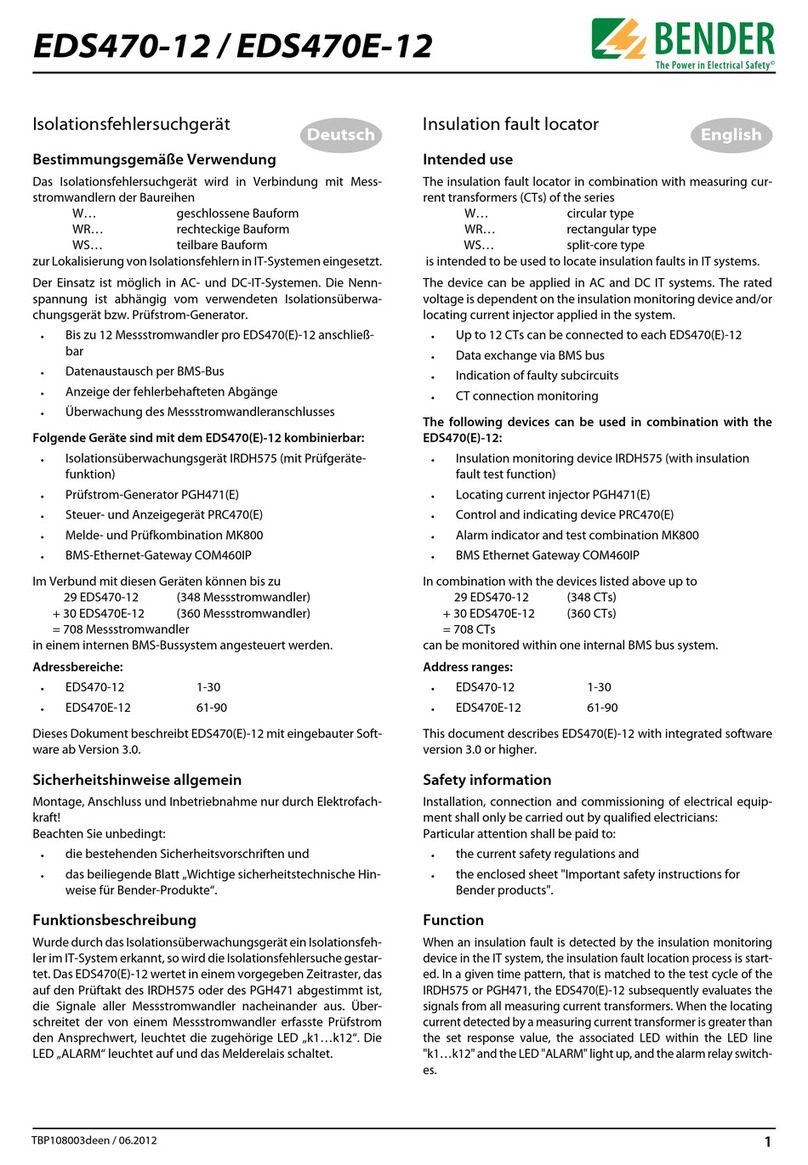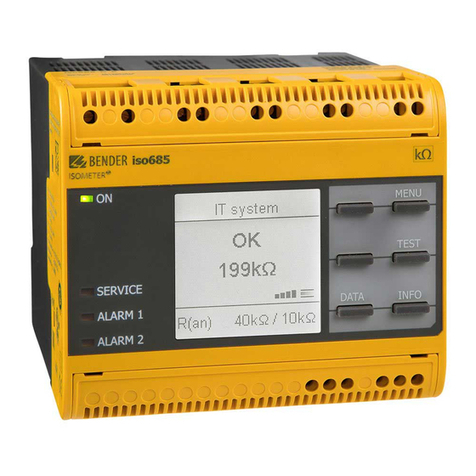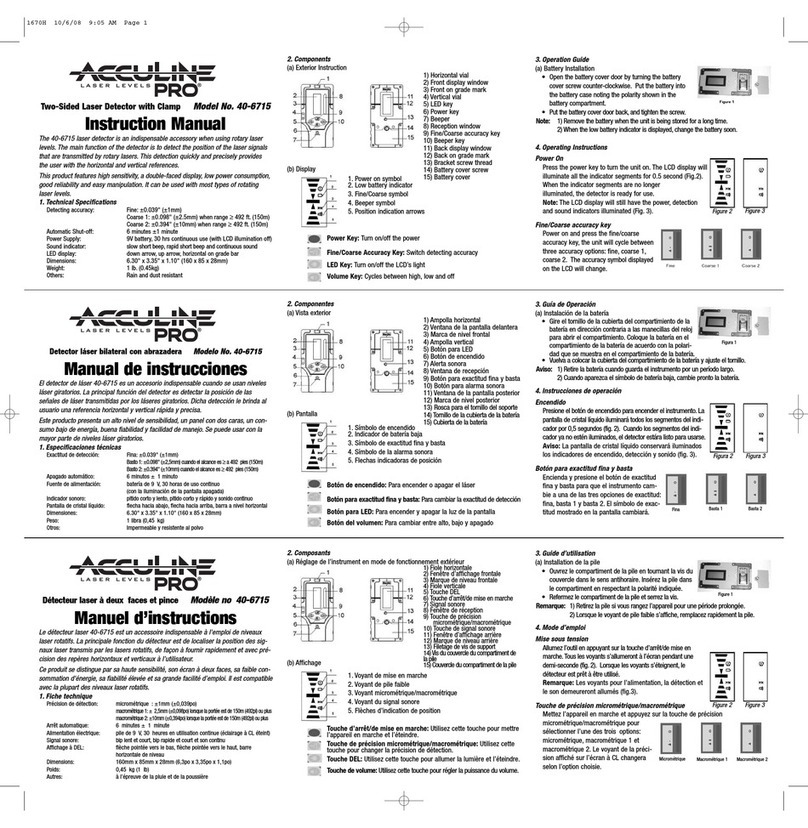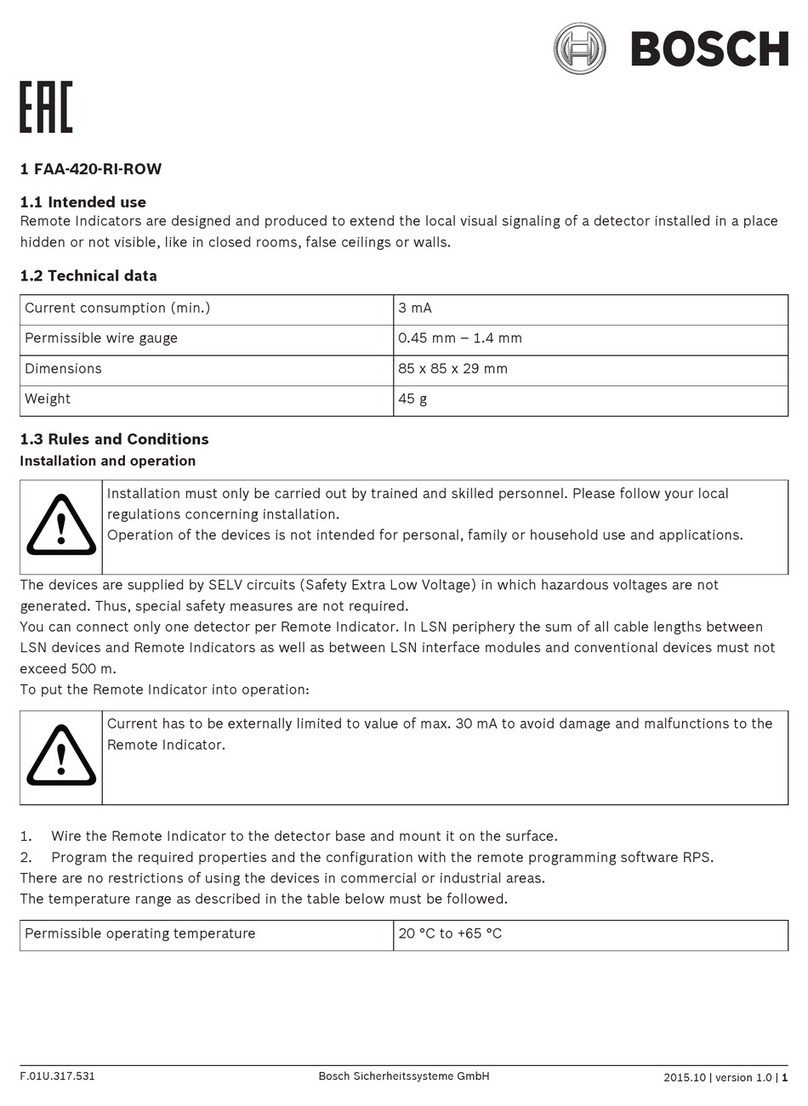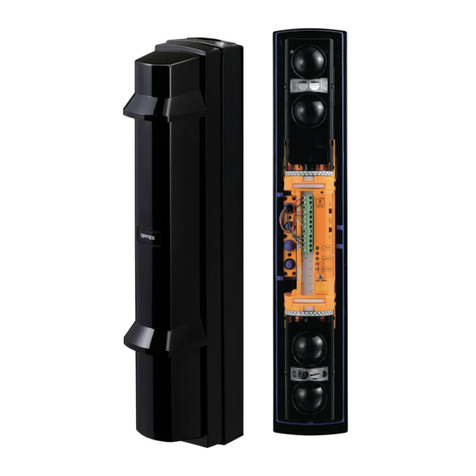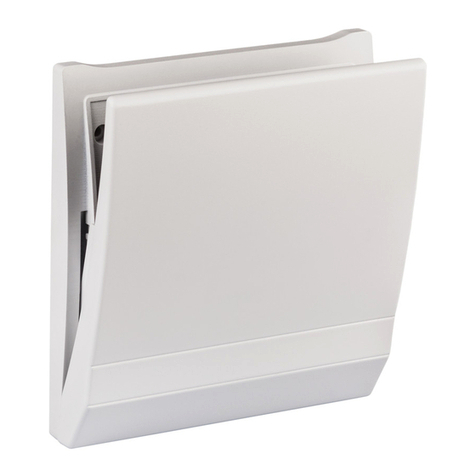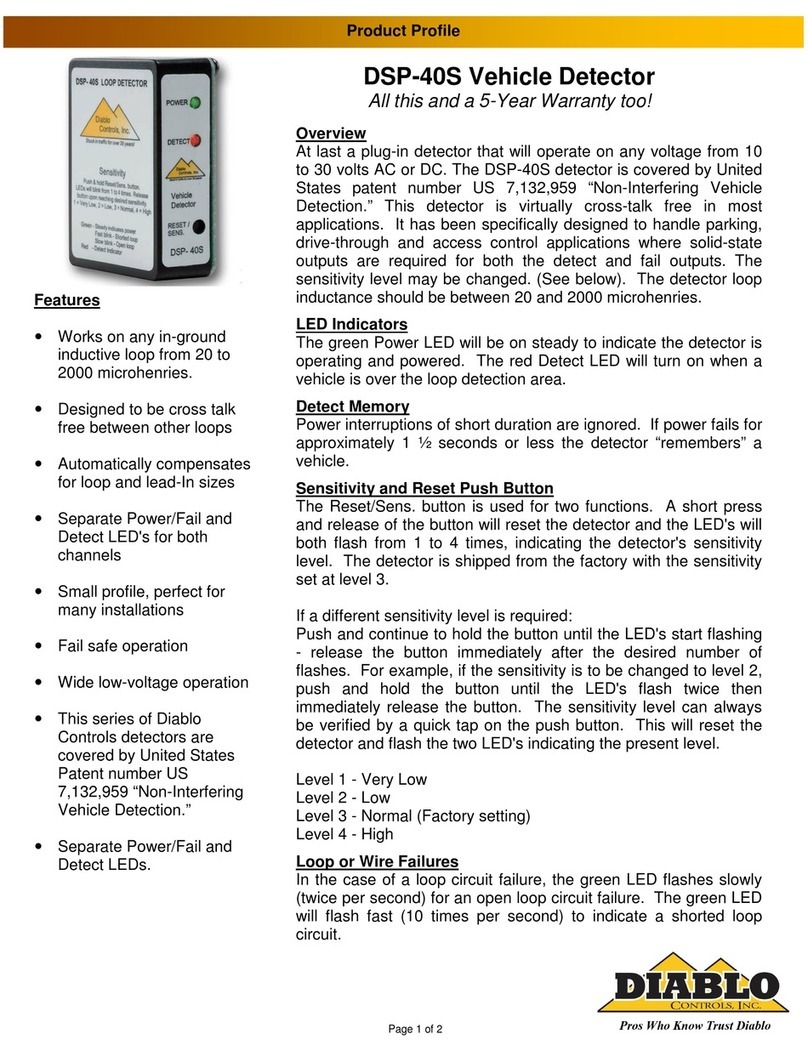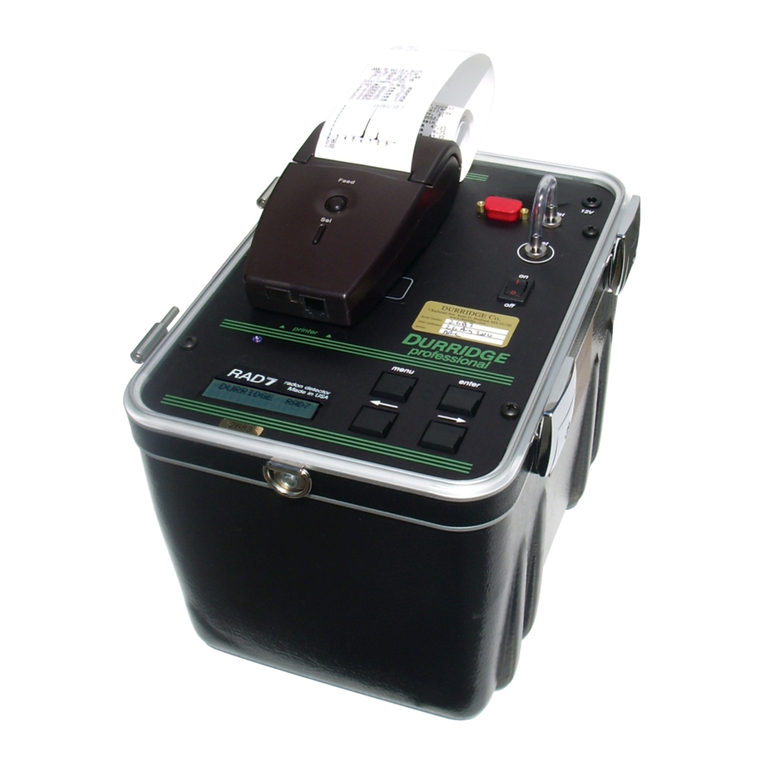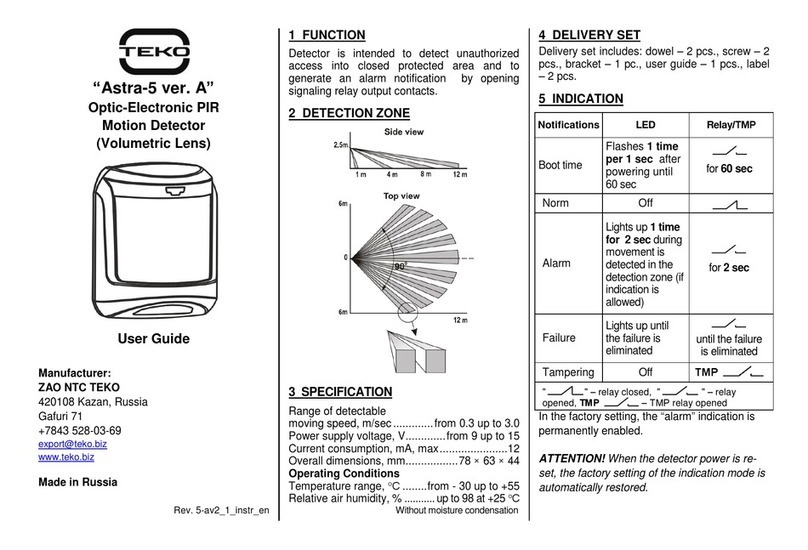Bender VMR420 User manual

Manual
EN
VMR420
Ripple detector
for monitoring of ripple voltages in DC systems
Software version: D346 V1.0x
VMR420_D00370_00_M_XXEN/07.2018

Bender GmbH & Co. KG
P.O. Box 1161 • 35301 Gruenberg • Germany
Londorfer Strasse 65 • 35305 Gruenberg • Germany
Tel.: +49 6401 807-0 • Fax: +49 6401 807-259
©Bender GmbH & Co. KG
All rights reserved.
Reprinting only with permission of the publisher.
Subject to change!
Photos: Bender archive

Table of Contents
3
VMR420_D00370_00_M_XXEN/07.2018
1. Important information .................................................................................... 7
1.1 How to use this manual ................................................................................. 7
1.2 Technical support: service and support ................................................... 8
1.2.1 First level support ............................................................................................. 8
1.2.2 Repair service ..................................................................................................... 8
1.2.3 Field service ........................................................................................................ 9
1.3 Training courses ............................................................................................. 10
1.4 Delivery conditions ....................................................................................... 10
1.5 Inspection, transport and storage ........................................................... 10
1.6 Warranty and liability ................................................................................... 11
1.7 Disposal ............................................................................................................ 12
2. Safety instructions ......................................................................................... 13
2.1 General safety instructions ........................................................................ 13
2.2 Work activities on electrical installations ............................................. 13
2.3 Intended use ................................................................................................... 14
2.4 Suppression of measurement input override ..................................... 14
3. Function ........................................................................................................... 15
3.1 Device features .............................................................................................. 15
3.2 Function ............................................................................................................ 15
3.2.1 Self test, automatic ....................................................................................... 16
3.2.2 Self test, manual ............................................................................................ 16
3.2.3 Functional fault .............................................................................................. 16
3.2.4 Fault memory ................................................................................................. 16
3.2.5 Assigning alarms to the alarm relays K/K2 ........................................... 17
3.2.6 Time delays ...................................................................................................... 17
3.2.7 Start-up delay ................................................................................................. 17
3.2.8 Response delay .............................................................................................. 17

Table of Contents
4VMR420_D00370_00_M_XXEN/07.2018
3.2.9 Delay on release ............................................................................................. 18
3.2.10 Measuring range selection in relation to the response time ......... 18
3.2.11 Rated system frequency ............................................................................. 18
3.2.12 Password protection (on, OFF) ................................................................. 18
3.2.13 Factory setting FAC ...................................................................................... 18
3.2.14 Erasable history memory ............................................................................ 19
3.2.15 Alarm LEDs show which relay is in the alarm state ........................... 19
3.2.16 Starting a device using a simulated alarm S.AL .................................. 19
4. Installation, connection and operation ..................................................... 21
4.1 Installing the device ..................................................................................... 21
4.2 Commissioning .............................................................................................. 23
4.3 Maintenance ................................................................................................... 23
5. Operation and configuration ...................................................................... 25
5.1 Available display elements ........................................................................ 25
5.2 Getting to know the user interface ......................................................... 26
5.3 Menu structure ............................................................................................... 27
5.4 Display in standard mode .......................................................................... 28
5.5 Display in menu mode ................................................................................ 29
5.5.1 Query and set parameters: Overview ..................................................... 29
5.5.2 Setting the response value for overvoltage and hysteresis ........... 32
5.5.3 Setting the fault memory and operating principle of the alarm
relays .................................................................................................................. 33
5.5.4 Assigning alarm categories to alarm relays ......................................... 34
5.5.5 Setting delay times ....................................................................................... 36
5.5.6 Setting the rated system frequency ...................................................... 37
5.5.7 Password protection and factory setting ............................................. 37
5.5.8 Restoring factory settings .......................................................................... 39
5.5.9 Querying device information .................................................................... 40
5.5.10 Querying the history memory .................................................................. 40
5.6 Factory setting ................................................................................................ 41

Table of Contents
5VMR420_D00370_00_M_XXEN/07.2018
6. Technical data VMR420 ................................................................................ 43
6.1 Standards, approvals and certifications ................................................ 46
6.2 Ordering information ................................................................................... 46
6.3 Label for modified versions ....................................................................... 47
INDEX .................................................................................................................... 49


7
VMR420_D00370_00_M_XXEN/07.2018
1. Important information
1.1 How to use this manual
Always keep this manual within easy reach for future reference.
To make it easier for you to understand and revisit certain sections in this man-
ual, we have used symbols to identify important instructions and information.
The meaning of these symbols is explained below:
This manual is intended for qualified personnel working in
electrical engineering and electronics!
This signal word indicates that there is a high risk of danger
that will result in electrocution or serious injury if not
avoided.
This signal word indicates a medium risk of danger that
can lead to death or serious injury if not avoided.
This signal word indicates a low level risk that can result in
minor or moderate injury or damage to property if not
avoided.
This symbol denotes information intended to assist the user
in making optimum use of the product.
DANGER
WARNING
CAUTION

Important information
8VMR420_D00370_00_M_XXEN/07.2018
This manual has been compiled with great care. It might nevertheless contain
errors and mistakes. Bender cannot accept any liability for injury to persons or
damage to property resulting from errors or mistakes in this manual.
1.2 Technical support: service and support
For commissioning and troubleshooting Bender offers you:
1.2.1 First level support
Technical support by phone or e-mail for all Bender products
Questions concerning specific customer applications
Commissioning
Troubleshooting
Telephone: +49 6401 807-760*
Fax: +49 6401 807-259
In Germany only: 0700BenderHelp (Tel. and Fax)
E-mail: [email protected]
1.2.2 Repair service
Repair, calibration, update and replacement service for Bender products
Repairing, calibrating, testing and analysing Bender products
Hardware and software update for Bender devices
Delivery of replacement devices in the event of faulty or incorrectly
delivered Bender devices
Extended guarantee for Bender devices, which includes an in-house
repair service or replacement devices at no extra cost
Telephone: +49 6401 807-780** (technical issues)
+49 6401 807-784**, -785** (sales)
Fax: +49 6401 807-789
E-mail: [email protected]
Please send the devices for repair to the following address:

Important information
9
VMR420_D00370_00_M_XXEN/07.2018
Bender GmbH, Repair-Service,
Londorfer Str. 65,
35305 Grünberg
1.2.3 Field service
On-site service for all Bender products
Commissioning, configuring, maintenance, troubleshooting of Bender
products
Analysis of the electrical installation in the building (power quality test,
EMC test, thermography)
Training courses for customers
Telephone: +49 6401 807-752**, -762 **(technical issues)
+49 6401 807-753** (sales)
Fax: +49 6401 807-759
E-mail: fieldservice@bender-service.de
Internet: www.bender-de.com
*Available from 7.00 a.m. to 8.00 p.m. 365 days a year (CET/UTC+1)
**Mo-Thu 7.00 a.m. - 8.00 p.m., Fr 7.00 a.m. - 13.00 p.m

Important information
10 VMR420_D00370_00_M_XXEN/07.2018
1.3 Training courses
Bender is happy to provide training regarding the use of test equipment.
The dates of training courses and workshops can be found on the Internet at
www.bender-de.com -> Know-how -> Seminars.
1.4 Delivery conditions
Bender sale and delivery conditions apply.
For software products the "Softwareklausel zur Überlassung von Standard-
Software als Teil von Lieferungen, Ergänzung und Änderung der Allgemeinen
Lieferbedingungen für Erzeugnisse und Leistungen der Elektroindustrie"
(software clause in respect of the licensing of standard software as part of de-
liveries, modifications and changes to general delivery conditions for prod-
ucts and services in the electrical industry) set out by the ZVEI (Zentralverband
Elektrotechnik- und Elektronikindustrie e. V.) (German Electrical and Electron-
ic Manufacturer's Association) also applies.
Sale and delivery conditions can be obtained from Bender in printed or elec-
tronic format.
1.5 Inspection, transport and storage
Inspect the dispatch and equipment packaging for damage, and compare the
contents of the package with the delivery documents. In the event of damage
in transit, please contact Bender immediately.
The devices must only be stored in areas where they are protected from dust,
damp, and spray and dripping water, and in which the specified storage tem-
peratures can be ensured.

Important information
11
VMR420_D00370_00_M_XXEN/07.2018
1.6 Warranty and liability
Warranty and liability claims in the event of injury to persons or damage to
property are excluded if they can be attributed to one or more of the follow-
ing causes:
Improper use of the device.
Incorrect mounting, commissioning, operation and maintenance of the
device.
Failure to observe the instructions in this operating manual regarding
transport, commissioning, operation and maintenance of the device.
Unauthorised changes to the device made by parties other than the
manufacturer.
Non-observance of technical data.
Repairs carried out incorrectly and the use of replacement parts or
accessories not approved by the manufacturer.
Catastrophes caused by external influences and force majeure.
Mounting and installation with device combinations not recom-
mended by the manufacturer.
This operating manual, especially the safety instructions,
must be observed by all personnel working on the device. Furthermore,
the rules and regulations that apply for accident prevention at the place of use
must be observed.

Important information
12 VMR420_D00370_00_M_XXEN/07.2018
1.7 Disposal
Abide by the national regulations and laws governing the disposal of this de-
vice. Ask your supplier if you are not sure how to dispose of the old equip-
ment.
The directive on waste electrical and electronic equipment (WEEE directive)
and the directive on the restriction of certain hazardous substances in electri-
cal and electronic equipment (RoHS directive) apply in the European Commu-
nity. In Germany, these policies are implemented through the "Electrical and
Electronic Equipment Act" (ElektroG). According to this, the following applies:
Electrical and electronic equipment are not part of household waste.
Batteries and accumulators are not part of household waste and must
be disposed of in accordance with the regulations.
Old electrical and electronic equipment from users other than private
households which was introduced to the market after 13 August 2005
must be taken back by the manufacturer and disposed of properly.
For more information on the disposal of Bender devices, refer to our
homepage at www.bender-de.com -> Service & support.

13
VMR420_D00370_00_M_XXEN/07.2018
2. Safety instructions
2.1 General safety instructions
Part of the device documentation in addition to this manual is the enclosed
"Safety instructions for Bender products".
2.2 Work activities on electrical installations
If the device is used outside the Federal Republic of Germany, the applicable
local standards and regulations must be complied with. The European stand-
ard EN 50110 can be used as a guide.
Only qualified personnel are permitted to carry out the
work necessary to install, commission and run a device or
system.
Risk of electrocution due to electric shock!
Touching live parts of the system carries the risk of:
An electric shock
Damage to the electrical installation
Destruction of the device
Before installing and connecting the device, make sure
that the installation has been de-energised. Observe the
rules for working on electrical installations.
DANGER

Safety instructions
14 VMR420_D00370_00_M_XXEN/07.2018
2.3 Intended use
The ripple detector VMR420 monitors the ripple voltage between the output
of six-pulse rectifier circuits and the loads. The device can be used for the ripp-
le voltage range AC 0…10 V.
The DC voltage is blocked by means of a coupling capacitor.
Separate supply voltage is required.
In order to meet the requirements of the applicable standards, customised pa-
rameter settings must be made on the equipment in order to adapt it to local
equipment and operating conditions. Please heed the limits of the range of
application indicated in the technical data.
Any use other than that described in this manual is regarded as improper.
2.4 Suppression of measurement input override
Such alarms can be suppressed by means of adjustable delay times
ton1/2 and toff (see page 17).
Quick DC voltage changes at the measuring input may result
in an override of the AC coupled measuring circuit. This may
result in false alarms!

15
VMR420_D00370_00_M_XXEN/07.2018
3. Function
3.1 Device features
Ripple monitoring for overvoltage
Adjustable switching hysteresis for overvoltage
Start-up delay, response delay and delay on release
r.m.s. value measurement AC (DC is blocked)
Measured value display via multi-functional LC display
Alarm signalling via LEDs (AL1, AL2) and changeover contacts (K1, K2)
N/C operation or N/O operation selectable
Password protection to prevent unauthorised changes being made to
device settings
Fault memory connectable, in the "con“ mode, all alarm parameters
remain stored in the event of failure of the supply voltage
Start-up of the device with or without simulated alarm message
3.2 Function
Once the power supply is connected, the start-up delay t will be activated. Va-
lues of the measured nominal voltage changing during this time do not influ-
ence the switching state of the alarm relays. The device features an adjustable
measuring channel for overvoltage measurement. If the measured value ex-
ceeds the response value for overvoltage, the response delays ton1/2 will start.
Once the response delay has elapsed, the alarm relays switch and the alarm
LEDs light up. If the measured value falls below the release value (response va-
lue plus hysteresis) once the alarm relays have switched, the selected release
delay begins toff. When toff has elapsed, the alarm relay will switch back to the
normal setting. If the fault memory is enabled, the alarm relays will remain in
the alarm state until the reset button R is pressed.

Function
16 VMR420_D00370_00_M_XXEN/07.2018
3.2.1 Self test, automatic
The device automatically carries out a self test after connection to the system
to be monitored and later every hour. Any internal malfunctions detected are
shown on the display as error codes. The alarm relays are not switched during
this test.
3.2.2 Self test, manual
The device runs a self test when the test button is pressed (> 1.5 s). Any inter-
nal malfunctions detected are shown on the display as error codes. The alarm
relays are not switched during this test.
Whilst the test button T is pressed, all display elements available for this de-
vice are shown.
3.2.3 Functional fault
In the event of an internal malfunction, all three LEDs will flash. The error code
(E01…E32) will appear on the display. In such a case please contact the Ben-
der Service.
3.2.4 Fault memory
The fault memory can be activated, deactivated or can be set to
continuous mode (con). If the fault memory is set to "con“ mode, the alarm pa-
rameters remain stored even on failure of the supply voltage.

Function
17
VMR420_D00370_00_M_XXEN/07.2018
3.2.5 Assigning alarms to the alarm relays K/K2
Different alarm categories can be assigned to the alarm relays K1/K2 via the
menu "out".
3.2.6 Time delays
The times described below delay the indication of alarms via LEDs and relays.
3.2.7 Start-up delay
When the supply voltage Usis connected, the alarm indication will be delayed
by the preset time t(0…300 s).
3.2.8 Response delay
When the response value is exceeded, the voltage relay requires the response
time tan until the alarm is activated.
A preset response delay ton (0…300 s) adds up to the operating time tae for
this device and delays alarm indication (total delay time tan = tae + ton).
Should the fault no longer persist during the response delay, the alarm signal
drops out.
Alarm indication of system-related failures (e.g. supply
voltage not available) or a device error, requires at least one
of the alarm relays, K1 or K2, to be in N/C operation mode
(n.c.). In addition, the alarm category "Err" has to be assigned
to the selected alarm relay in the menu out/r1 or r2.
If these conditions cannot be met, periodic inspection of the
VMR420 is required!

Function
18 VMR420_D00370_00_M_XXEN/07.2018
3.2.9 Delay on release
If the alarm no longer exists during the response delay and the fault memory
is deactivated, the alarm LEDs will go out and the alarm relays switch back to
their initial position. The delay on release (0…300 s) serves to maintain the
alarm state signal for the set duration.
3.2.10 Measuring range selection in relation to the response time
The VMR420 provides several measuring ranges. Depending on the setting of
the response value for overvoltage, the device selects the optimum measu-
ring range automatically. If the measured voltage exceeds the set response
value and the actual measuring range, the measuring range will be not be op-
timised until the response time has elapsed
(tan = tae + ton).
3.2.11 Rated system frequency
Precondition for r.m.s. value measurement is that the measuring period is a
multiple of the fundamental frequency fn. Use the menu Hz to set the refe-
rence value for the fundamental frequency for calculating the measuring pe-
riod.
The fundamental frequency is the frequency in the AC system upstream the
rectifier.
3.2.12 Password protection (on, OFF)
If password protection has been activated (on), settings can only be made
subject to the correct password being entered (0…999). If you cannot operate
your device because you cannot remember your password, please contact in-
fo@Bender-service.com.
3.2.13 Factory setting FAC
Activating the factory setting will reset all modified setting to the default
upon delivery.

Function
19
VMR420_D00370_00_M_XXEN/07.2018
3.2.14 Erasable history memory
The first alarm value to occur is written to this memory.
Subsequent alarms do not overwrite this "old" value. The memory can be
erased via the menu HiS with Clr.
3.2.15 Alarm LEDs show which relay is in the alarm state
Once the menu LEd has been activated, the alarm LED AL1 indicates that
K1 is in the alarm state. When AL2 lights up, K2 is in the alarm state. An alarm
relay cannot switch to the alarm state unless an alarm category has been assi-
gned to it.
When the menu LEd is deactivated, AL1 indicates overvoltage.
For details about alarm category assignment to the respective relays refer to
the submenu "out" description on page 27.
3.2.16 Starting a device using a simulated alarm S.AL
If the menu item S.AL has been activated in the out menu, K1 resp. K2 switches
back to the alarm state once the supply voltage is applied. This alarm state is
maintained for the set duration t+ ton1. Once this time has elapsed, K1 resp.
K2 switches back to the initial position provided that no fault is detected at the
measuring input.
The following diagrams show the effect of a fault occurring during a simulated
alarm.
Faults at the measuring input and the resulting condition of the alarm relay K1
(K2) are shown as a hatched area.
Table of contents
Other Bender Security Sensor manuals
Popular Security Sensor manuals by other brands
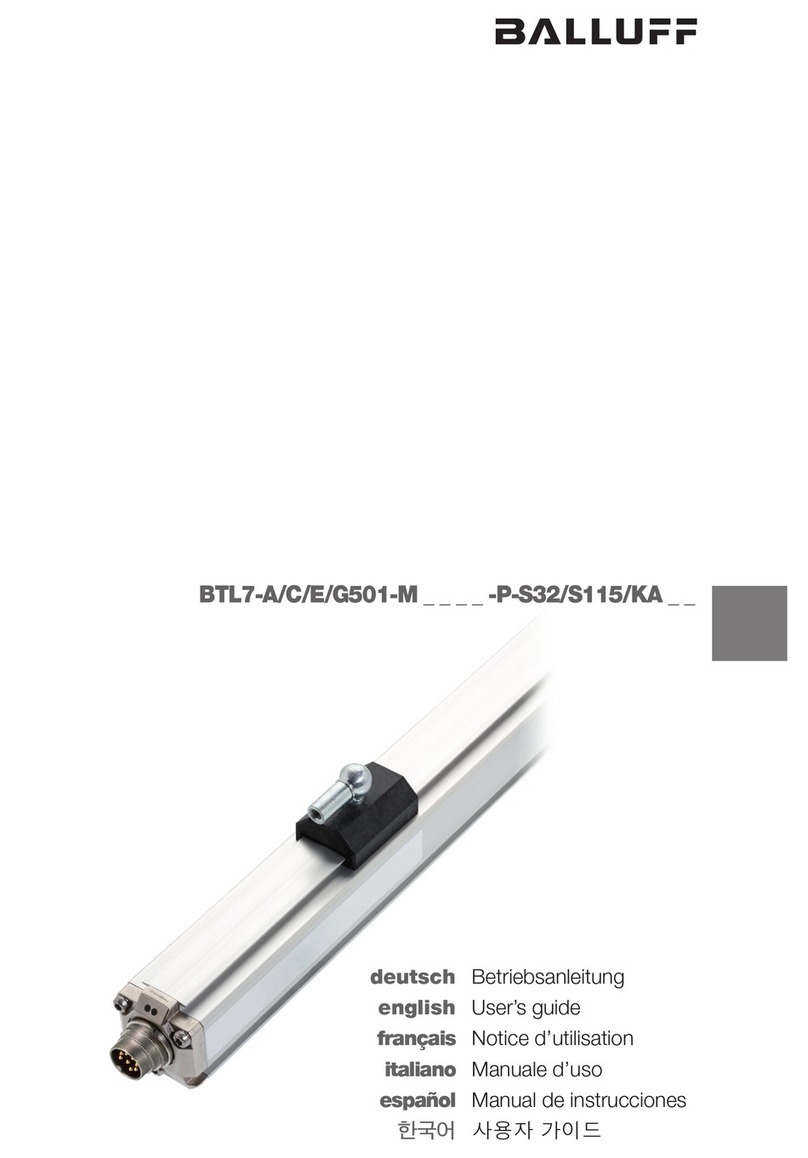
Balluff
Balluff BTL7-A/C/E/G501-M P-S32/S115/KA Series user guide
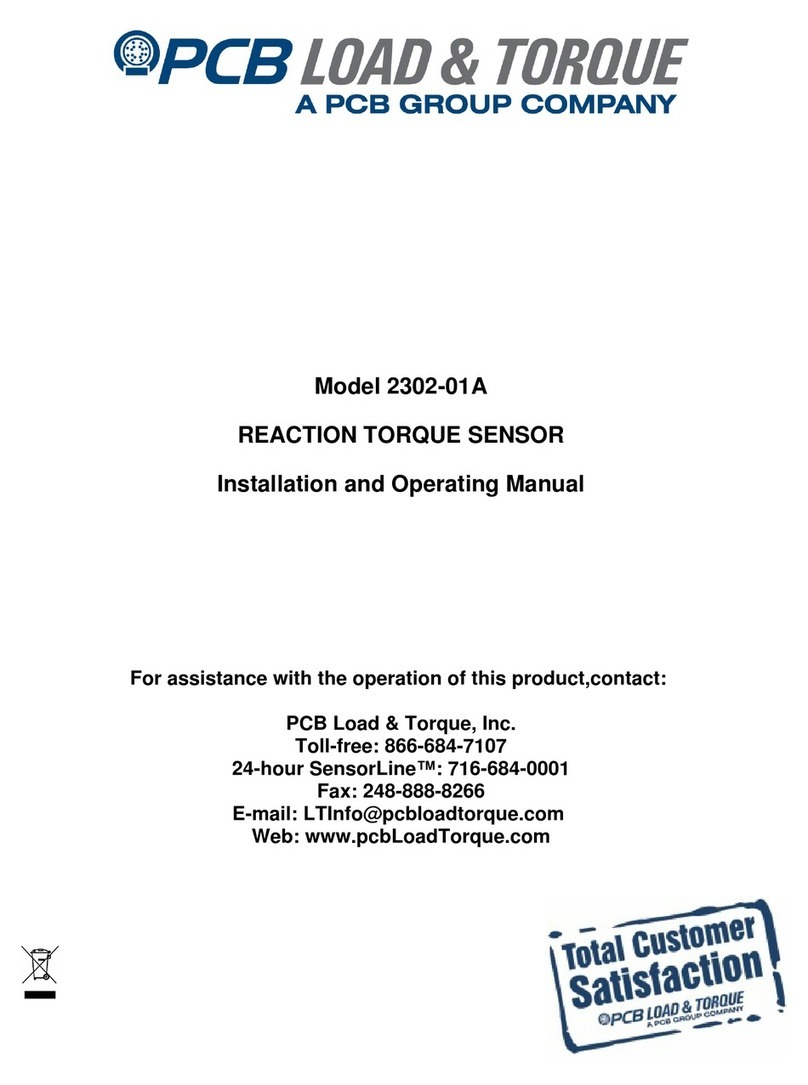
PCB
PCB 2302-01A Installation and operating manual
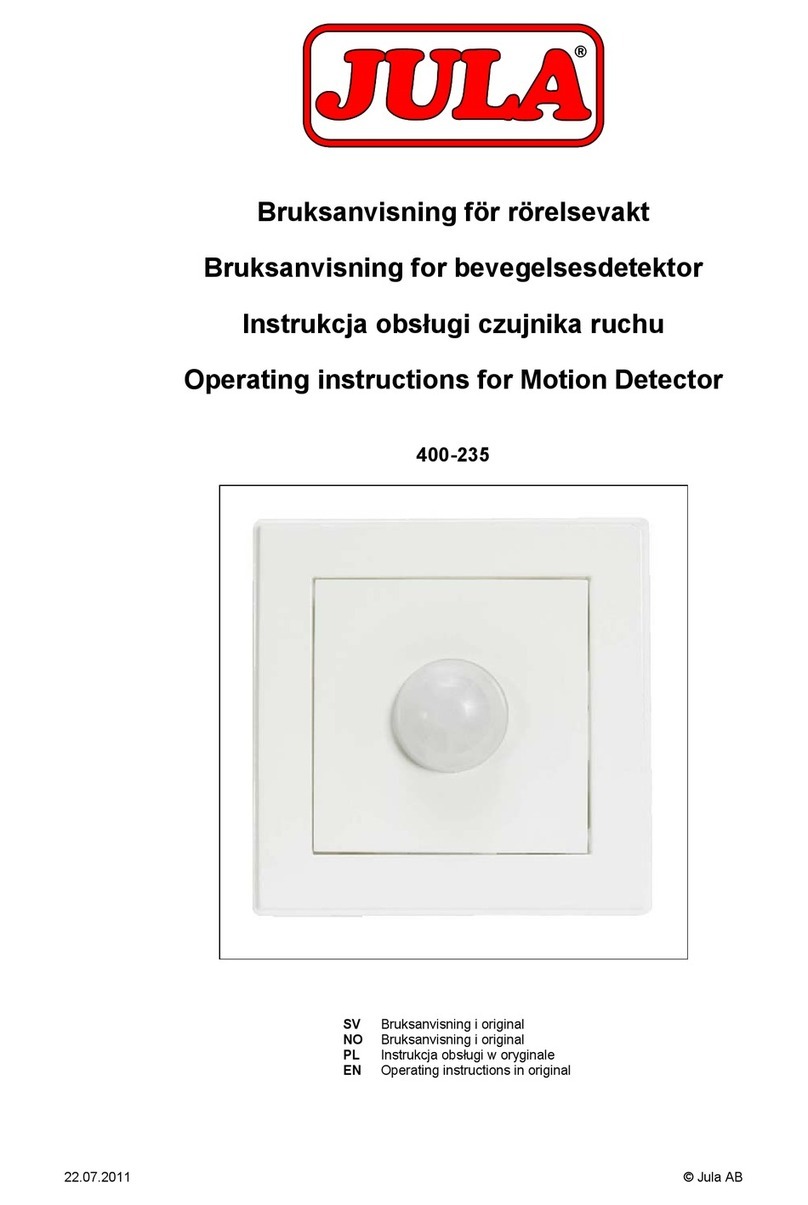
Jula
Jula 400-235 operating instructions
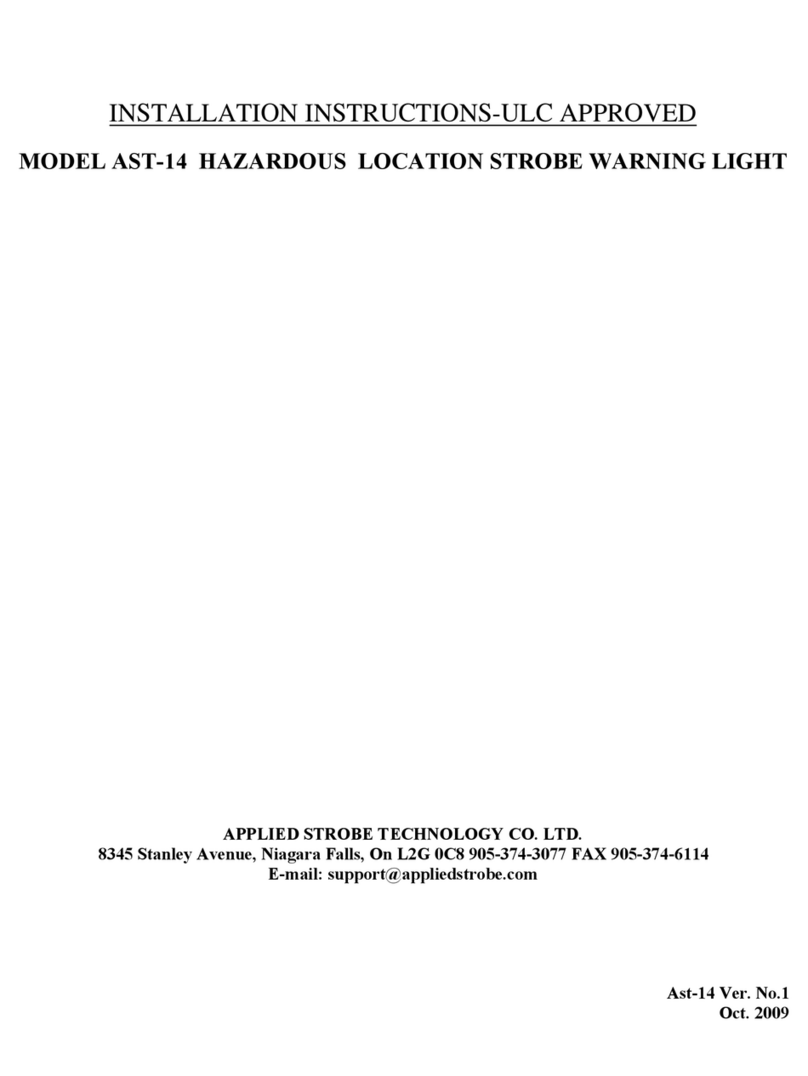
Applied Strobe
Applied Strobe AST-14 installation instructions
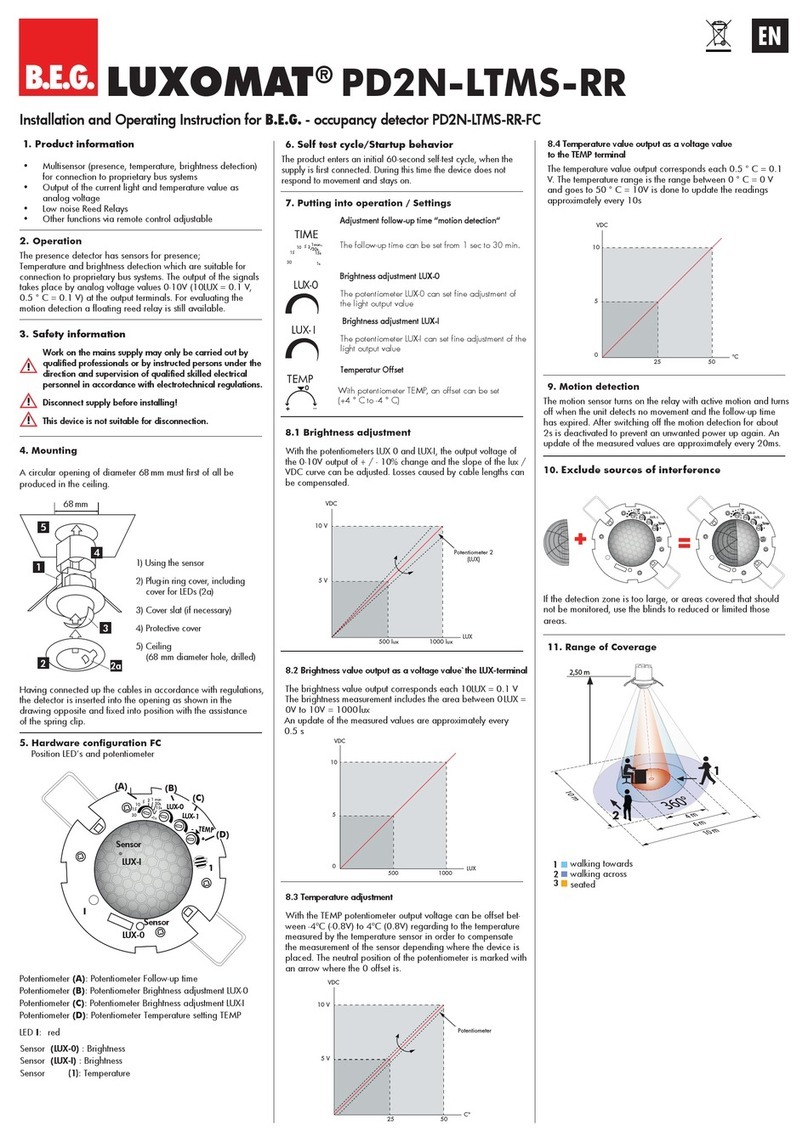
LUXOMAT
LUXOMAT PD2N-LTMS-RR Installation and operating instruction

sewerin
sewerin Duophon operating instructions

